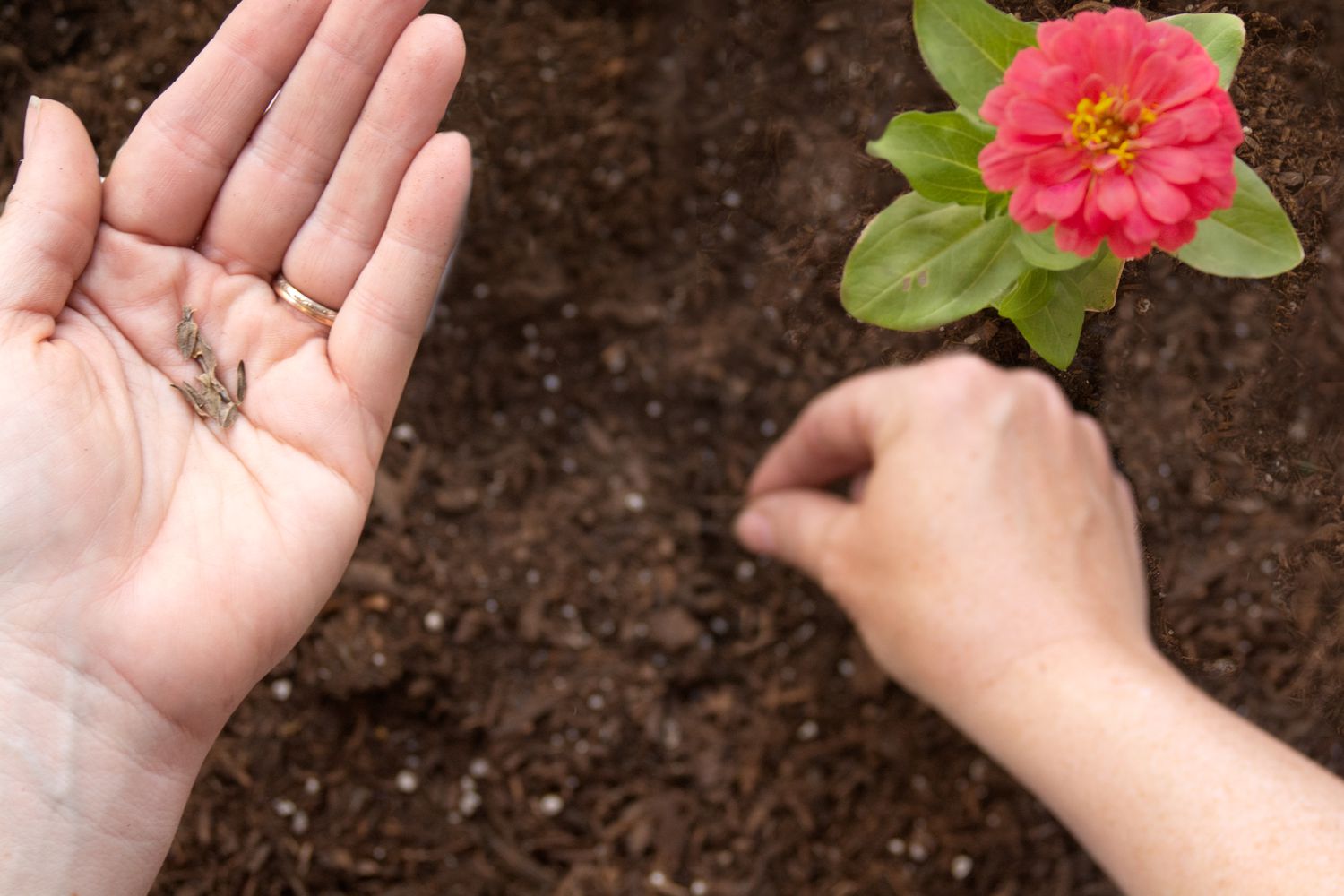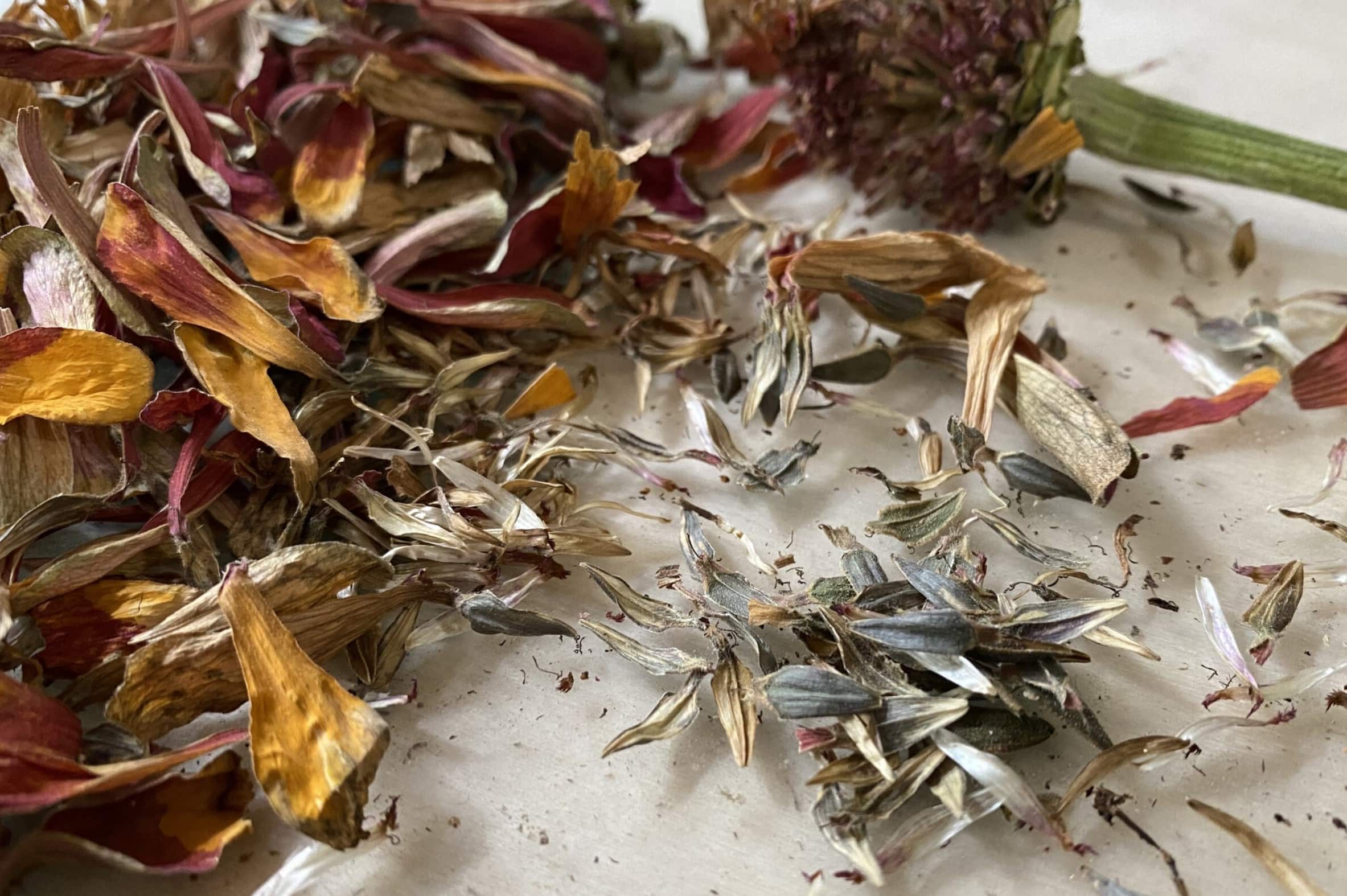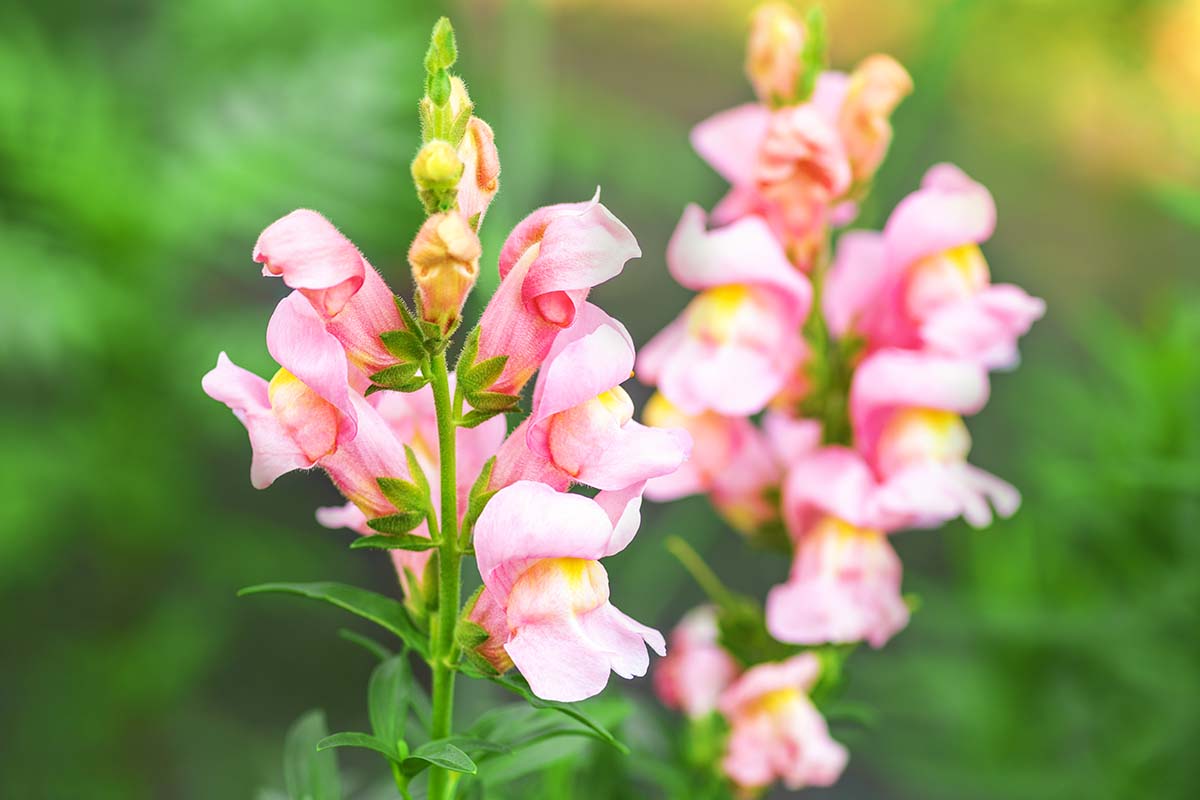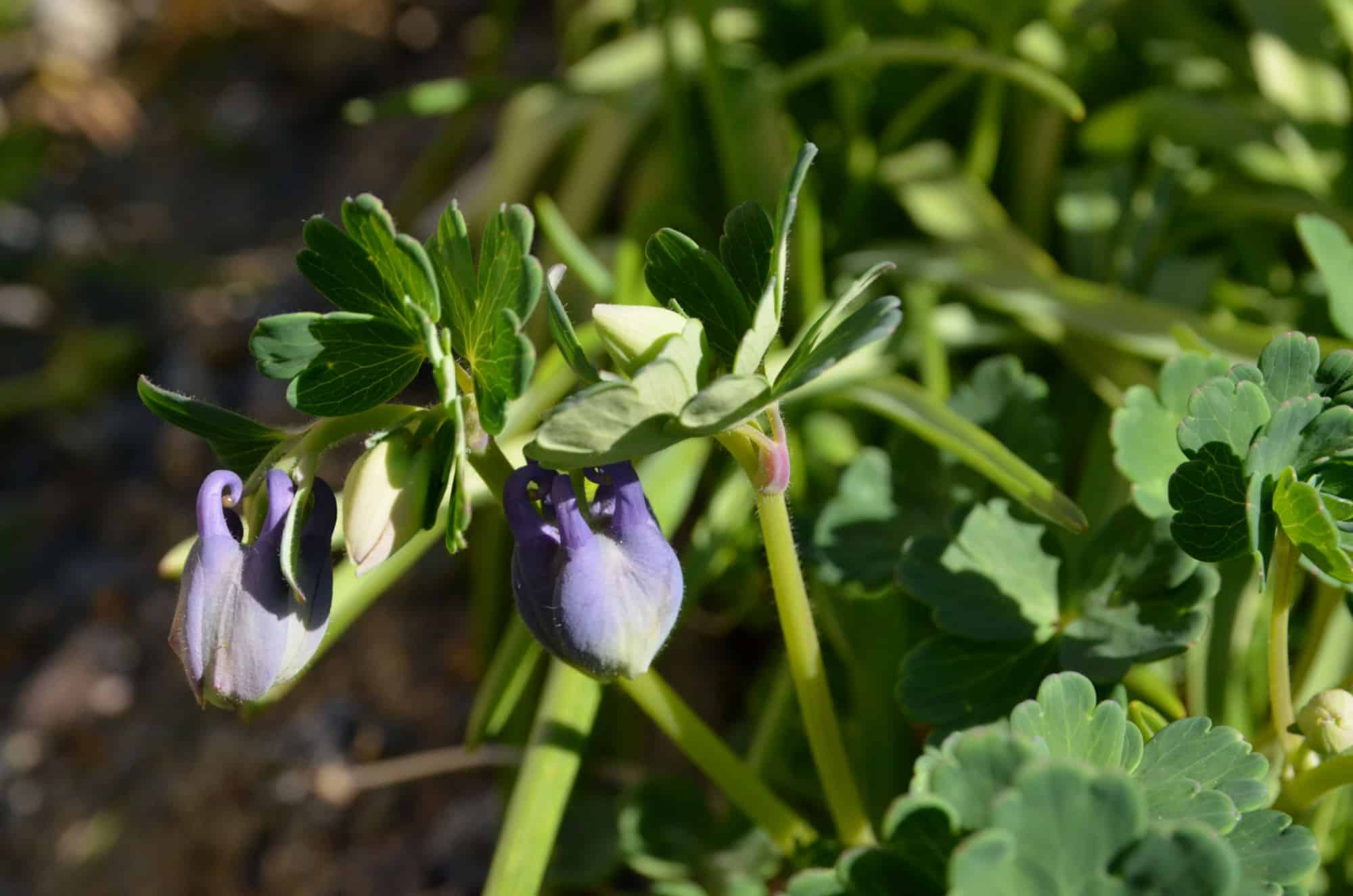Home>Garden Essentials>When To.Plant Zinnia Seeds


Garden Essentials
When To.Plant Zinnia Seeds
Modified: April 22, 2024
Discover when to plant zinnia seeds in your garden for a burst of vibrant colors all summer long.
(Many of the links in this article redirect to a specific reviewed product. Your purchase of these products through affiliate links helps to generate commission for Storables.com, at no extra cost. Learn more)
Introduction
Welcome to the wonderful world of gardening! Whether you’re a seasoned green thumb or just beginning your journey, planting zinnia seeds is a great way to beautify your garden and bring a burst of color to your outdoor space. Zinnias are vibrant, easy-to-grow flowers that come in a wide range of colors, making them a popular choice for both experienced gardeners and beginners.
In this article, we’ll cover everything you need to know about planting zinnia seeds, from the factors to consider to the best time to start sowing. So grab your gardening gloves and get ready to learn how to grow these stunning flowers!
Key Takeaways:
- Zinnias thrive in warm climates and need full sunlight, making them perfect for gardens with hot summers. Starting seeds indoors can give them a head start in cooler regions.
- Proper soil preparation, watering, and spacing are crucial for healthy zinnia growth. Understanding flowering time and harvesting techniques allows for vibrant blooms in your garden or floral arrangements.
Read more: When Can You Plant Zinnia Seeds
Factors to Consider
Before diving into the process of planting zinnia seeds, it’s important to consider a few key factors to ensure successful growth and blooming. Let’s take a look at these factors:
- Sunlight: Zinnias thrive in full sunlight, so make sure you choose an area in your garden that receives at least 6 to 8 hours of direct sunlight per day. Limited sunlight can result in leggy plants and fewer blooms.
- Temperature: Zinnias are warm-season plants and prefer temperatures between 75 to 85 degrees Fahrenheit. If you live in a region with cooler climates, you may want to consider starting your zinnia seeds indoors and transplanting them when the weather warms up.
- Watering: Zinnias require regular watering, especially during dry spells. However, it’s important not to overwater them as it can lead to root rot. Aim to keep the soil consistently moist but not waterlogged.
- Soil Quality: Zinnias prefer well-draining soil with a pH level between 5.5 and 7.0. Prepare the soil by adding organic matter such as compost or aged manure to improve its fertility and drainage.
- Companion Plants: Zinnias make great companions to a variety of other flowers and herbs. Consider planting them alongside marigolds, lantanas, or salvias, as they not only create a visually appealing display but also help repel common garden pests.
- Garden Location: Choose a spot in your garden that allows for good air circulation. Crowded and compacted areas can lead to increased humidity, which can make zinnias more susceptible to powdery mildew and other fungal diseases.
By taking these factors into account, you’ll create an optimal growing environment for your zinnia plants and increase the chances of a bountiful display of colorful blooms.
Climate Requirements
Zinnias are known for their ability to thrive in a variety of climates, making them versatile flowers that can be grown in different regions. Understanding the climate requirements for zinnias will help you determine the best time to plant them and ensure their successful growth.
Generally, zinnias prefer warm weather and are classified as warm-season annual flowers. They thrive in areas with mild springs and hot summers, where the average temperature ranges between 75 to 85 degrees Fahrenheit. If you live in a region with cooler climates, you can still enjoy zinnias by starting the seeds indoors and then transplanting the seedlings outdoors when the weather warms up.
Zinnias are frost-sensitive, so it’s essential to wait until all danger of frost has passed before planting them. Even a light frost can damage or kill young zinnia plants. To determine your region’s frost dates, you can consult your local agricultural extension service or use online resources that provide frost date information.
Additionally, zinnias require full sun to thrive. They need at least 6 to 8 hours of direct sunlight each day to produce vigorous growth and profuse blooms. If you live in an area with hot summers, and the temperature regularly exceeds 85 degrees Fahrenheit, providing some afternoon shade can help protect the zinnia plants from scorching and wilting.
It’s worth noting that zinnias can tolerate a wide range of soil conditions. They prefer well-draining soil with a slightly acidic to slightly alkaline pH level between 5.5 and 7.0. If your soil is heavy clay or tends to retain water, you can amend it with organic matter, such as compost or aged manure, to improve drainage and fertility.
By understanding the climate requirements of zinnias, you can plan your planting schedule accordingly and create a favorable environment for these beautiful flowers to thrive in your garden.
Soil Preparation
Proper soil preparation is crucial for the successful growth of zinnias. By providing them with well-draining, nutrient-rich soil, you’ll create an optimal environment for the seeds to germinate and the plants to thrive. Here are the steps to prepare the soil for planting zinnia seeds:
- Choose the right location: Select a sunny spot in your garden for planting zinnias. They prefer full sun, so ensure the area receives at least 6 to 8 hours of direct sunlight each day.
- Clear the area: Remove any weeds, rocks, or debris from the planting site. This will prevent competition for nutrients and ensure the zinnias have ample space to grow.
- Loosen the soil: Use a garden fork or a tiller to loosen the soil to a depth of about 8 to 10 inches. This will improve drainage and make it easier for the zinnia’s roots to establish and expand.
- Amend the soil: Zinnias prefer well-draining soil with a slightly acidic to slightly alkaline pH level. Test your soil’s pH using a soil testing kit, and if needed, amend it with organic matter to adjust the pH. Adding compost, aged manure, or peat moss can improve soil fertility and structure.
- Incorporate fertilizer: Before planting the zinnia seeds, apply a balanced slow-release fertilizer according to the label instructions. This will provide a steady supply of nutrients to the plants as they grow.
- Work the soil: Use a rake or garden hoe to mix the amendments and fertilizer into the soil thoroughly. This will ensure that the nutrients are evenly distributed and readily available to the zinnia plants.
Once the soil preparation is complete, you’re ready to start planting your zinnia seeds. Remember to water the soil lightly after sowing the seeds to promote germination. With proper soil preparation, you’ll provide the zinnias with the optimal conditions they need to thrive and produce beautiful blooms.
Seed Starting Time
The timing of when to start your zinnia seeds is crucial for their successful germination and growth. Zinnias are warm-season flowers, and they require warm soil and consistently high temperatures for optimal growth. Here are some guidelines to help you determine the best time to start your zinnia seeds:
Indoor Seed Starting:
If you live in an area with a short growing season or cool springs, starting zinnia seeds indoors gives them a head start and ensures they have enough time to mature and bloom during the summer. The general rule of thumb is to start zinnia seeds indoors about 4 to 6 weeks before the last frost date in your region.
First, check your local frost dates. You can consult your local agricultural extension service or use online resources that provide frost date information. Once you know the last expected frost date, count back 4 to 6 weeks to determine your indoor seed starting date.
Sow the zinnia seeds in seed trays or small pots filled with seed starting mix. The seeds should be planted approximately ¼ inch deep. Place the trays in a warm location that receives plenty of sunlight or under grow lights. Maintain a temperature of around 70 to 75 degrees Fahrenheit for optimal germination.
Outdoor Seed Starting:
If you live in an area with a longer growing season and warm springs, you can sow zinnia seeds directly into the ground once the soil has warmed up and all risk of frost has passed. The soil temperature should be consistently above 60 degrees Fahrenheit for successful germination.
To determine the best time for outdoor seed starting, monitor soil temperatures using a soil thermometer or check local gardening resources to see when the average soil temperature reaches the desired range. In general, this is usually around late spring or early summer.
By starting your zinnia seeds at the appropriate time, whether indoors or outdoors, you’ll give them the best chance to establish strong roots and produce vibrant blooms throughout the growing season. Remember to follow the specific instructions on the seed packet for the particular zinnia variety you’re planting, as germination and growth times may vary.
Read more: When Do You Plant Zinnia Seeds
Indoor or Outdoor Planting
The decision to plant zinnia seeds indoors or directly in your garden depends on various factors, such as your climate, available space, and personal preference. Both methods have their advantages and considerations, so let’s explore the options:
Indoor Planting:
Starting zinnia seeds indoors allows you to get a head start on the growing season, especially if you live in an area with a short growing season or cool springs. Indoor planting gives the seeds a controlled environment with consistent temperatures, leading to faster germination and stronger seedlings.
To start zinnia seeds indoors, sow them in seed trays or small pots filled with seed starting mix, about 4 to 6 weeks before the last frost date in your region. Keep the trays in a warm location with plenty of sunlight or under grow lights. Maintain a temperature of around 70 to 75 degrees Fahrenheit for optimal germination.
Indoor planting gives you greater control over the growing conditions, making it easier to manage moisture levels, provide the ideal temperature, and protect the seedlings from pests and diseases. It also allows for better observation and care of the young plants as they grow.
Outdoor Planting:
If you live in an area with a longer growing season, or if you prefer the simplicity of direct sowing, you can plant zinnia seeds directly into your garden once the soil has warmed up and all risk of frost has passed. This method eliminates the need for indoor seed starting and the potential challenges of transplanting seedlings.
When choosing outdoor planting, prepare the soil by removing weeds and debris, loosening it, and amending it with compost or organic matter to improve drainage and fertility. Sow the zinnia seeds at the recommended depth, which is usually around ¼ inch, and water lightly after planting. Ensure that the planting area receives at least 6 to 8 hours of direct sunlight each day.
Outdoor planting allows the zinnias to grow naturally without the need for transplanting, which can minimize root disturbance and increase the chances of successful establishment. It also simplifies the planting process and saves time and effort.
Ultimately, whether you choose indoor or outdoor planting for your zinnia seeds, the key is to provide the optimal growing conditions, such as sunlight, watering, soil preparation, and proper spacing. With attentiveness and care, your zinnias will flourish and reward you with a vibrant display of colorful blooms.
Zinnia seeds should be planted outdoors after the last frost date in your area. They prefer warm soil, so wait until the soil temperature is at least 70°F (21°C). This is usually around late spring or early summer.
Planting Depth and Spacing
Proper planting depth and spacing are essential for zinnias to grow and thrive. Following the recommended guidelines will help ensure the plants have enough room to develop strong roots and produce abundant blooms. Let’s explore the ideal planting depth and spacing for zinnias:
Planting Depth:
When sowing zinnia seeds, it’s important to plant them at the appropriate depth to promote successful germination. The general rule of thumb is to plant zinnia seeds at a depth of about ¼ inch (0.6 cm) in the soil. This is typically shallow, and you can achieve this depth by gently pressing the seeds into the soil or lightly covering them with a thin layer of soil or vermiculite.
Planting zinnia seeds too deep may delay germination or prevent the seeds from sprouting altogether. On the other hand, planting them too shallow may expose the seeds to excess drying and increase the risk of seeds being disturbed or washed away during watering.
Planting Spacing:
Zinnias require adequate spacing to allow proper airflow and prevent overcrowding, which can lead to increased humidity and increased risk of diseases. The specific spacing requirements can vary depending on the zinnia variety and its mature size. Here are some general guidelines:
- Tall varieties: If you’re growing tall zinnia varieties, provide spacing between plants that ranges from 12 to 18 inches (30 to 45 cm). This allows the plants to grow upright and reduces the chances of them leaning or shading each other.
- Medium-sized varieties: For medium-sized zinnias, aim for spacing between plants of approximately 8 to 12 inches (20 to 30 cm). This provides enough room for the plants to branch out and ensures good air circulation.
- Dwarf or compact varieties: Dwarf or compact zinnias can be planted closer together, with spacing of about 6 to 8 inches (15 to 20 cm) between plants. Their smaller size allows for a denser planting, creating a vibrant, colorful display.
Remember to consider the mature size of the zinnia plants when spacing them at the time of planting. Providing adequate spacing allows for healthy growth, prevents competition for nutrients, and ensures that each plant has enough space to flourish and produce abundant blooms.
Watering and Fertilizing
Proper watering and fertilizing are essential for the healthy growth and vibrant blooms of zinnia plants. These practices provide the necessary nutrients and moisture needed for optimal development. Here are some guidelines for watering and fertilizing zinnias:
Watering:
Zinnias require regular watering to keep the soil consistently moist but not waterlogged. Here are some tips for watering zinnias:
- Establishment period: During the initial establishment period after planting, water zinnia seeds or young seedlings lightly to keep the soil evenly moist. Avoid overwatering, as it can lead to root rot.
- Mature plants: As the zinnia plants mature, continue to water them regularly, especially during dry spells or periods of high heat. Aim to provide about an inch of water per week, either through rainfall or supplemental irrigation.
- Watering method: To prevent water from directly hitting the foliage, which can promote disease development, use a soaker hose or water at the base of the plants. This allows water to reach the roots more efficiently.
- Monitor the soil: Check the soil moisture by inserting your finger about an inch into the soil. If it feels dry at that depth, it’s time to water. Avoid letting the soil dry out completely between waterings.
Fertilizing:
Zinnias are generally low-maintenance plants when it comes to fertilizer requirements. However, providing some supplemental nutrients can help promote healthier plants and more abundant blooms. Here are some guidelines for fertilizing zinnias:
- Slow-release fertilizer: Before planting the zinnia seeds or young seedlings, incorporate a balanced slow-release fertilizer into the soil following the package instructions. This will provide a steady supply of nutrients as the plants grow.
- Organic fertilizers: If you prefer organic options, you can use compost, aged manure, or other organic fertilizers to nourish the soil. Apply them to the soil surface around the plants, avoiding direct contact with the plant foliage.
- Timing: Apply the fertilizer once at the beginning of the growing season, and if desired, another application after the plants have started to establish and show signs of growth. Avoid excessive fertilization, as it can lead to excessive foliage growth at the expense of flower production.
- Follow the instructions: Always read and follow the instructions on the fertilizer packaging to determine the appropriate amount and frequency of application. Different fertilizers may have different formulations and recommended application rates.
By watering zinnias appropriately and providing balanced fertilization, you’ll supply them with the necessary resources for vigorous growth, strong stems, and brilliant blooms to enhance your garden with their vibrant colors throughout the season.
Pest and Disease Control
Just like any other plants, zinnias can be susceptible to various pests and diseases. However, with proper care and proactive measures, you can help prevent and control common issues that may arise. Here are some tips for effective pest and disease control for your zinnia plants:
Pest Control:
- Aphids: These small, sap-sucking insects can cluster on the undersides of leaves and cause stunted growth and distortion. To control aphids, blast them off with a strong stream of water or use insecticidal soap or neem oil for more severe infestations. Encouraging beneficial insects like ladybugs can also help control aphids.
- Caterpillars: Caterpillars, such as the tomato hornworm or cabbage looper, can feed on the foliage of zinnia plants. Handpicking them off the plants or using organic insecticides, like Bacillus thuringiensis (Bt), can help control caterpillar populations.
- Spider mites: These tiny pests can cause yellowing leaves and webbing on the plant. Regularly spraying the foliage with a strong stream of water helps deter spider mites. Introducing predatory mites or using insecticidal soap can also help control infestations.
- Snails and slugs: These common garden pests can chew on zinnia leaves, leaving behind irregular holes. Control snails and slugs by handpicking them off the plants, placing beer traps, or using natural repellents like copper barriers or diatomaceous earth.
Disease Control:
- Powdery mildew: Powdery mildew is a fungal disease that appears as a white, powdery coating on the plant’s leaves. To prevent powdery mildew, provide good air circulation by spacing plants properly and avoiding overhead watering. If the disease occurs, use fungicidal sprays or organic alternatives like neem oil or sulfur-based products.
- Leaf spot: Leaf spot is a fungal disease that causes dark-colored spots on the leaves. Remove and destroy infected leaves to prevent the spread of the disease. Avoid overhead watering and apply fungicidal sprays as needed.
- Root rot: Overwatering or poorly drained soil can lead to root rot, a condition where the roots become waterlogged and start to rot. Ensure proper drainage and avoid overwatering to prevent root rot. If root rot occurs, remove affected plants and amend the soil for better drainage.
Implementing good cultural practices, such as watering at the base of the plants, avoiding overwatering, providing adequate spacing, and removing diseased plant material, can significantly reduce the risk of pests and diseases. Regular monitoring of your zinnia plants and taking early action at the first signs of trouble are key to keeping them healthy and vibrant throughout the growing season.
Read more: How To Seed Zinnias
Harvesting and Flowering Time
Zinnias are popular for their beautiful and vibrant blooms, and knowing when and how to harvest them is essential for enjoying their beauty in floral arrangements or preserving them for later use. Here’s what you need to know about harvesting zinnias and understanding their flowering time:
Flowering Time:
Flowering time for zinnias can vary depending on the variety and growing conditions. On average, zinnias typically start blooming about 60 to 70 days after germination. However, this can vary, and some zinnia varieties may bloom earlier or later. It’s important to refer to the specific instructions provided on your zinnia seed packet, as it will often indicate an estimated time to flowering.
Zinnia flowers come in various shapes, sizes, and colors, adding a burst of beauty to your garden. Some popular zinnia varieties include the “Giant Dahlia Flowered” zinnias, with large, fully double blooms, and the “Cut and Come Again” zinnias, which produce an abundance of smaller, but long-lasting, flowers.
Flowering can continue throughout the growing season, typically until the arrival of the first frost. Regular deadheading, which involves removing spent flowers, can promote continuous blooming by preventing the plants from diverting energy into seed production.
Harvesting Zinnias:
To harvest zinnias for floral arrangements or other uses, follow these steps:
- Timing: Harvest zinnia flowers in the morning or late afternoon when the blossoms are fully open, but the heat of the day hasn’t caused them to wilt.
- Cutting method: Use sharp pruning shears or scissors to cut the stem of the zinnia flower just above a set of healthy leaves or lateral buds. This promotes further branching and encourages the plant to produce more flowers.
- Water immediately: After cutting, place the zinnia stems in a bucket of water to keep them hydrated and ensure the best possible vase life.
- Care and arrangement: Remove any leaves that would be submerged in the water of your arrangement and place the zinnias in a clean vase filled with fresh water. Change the water every few days to extend the vase life of the flowers.
It’s worth mentioning that certain zinnia varieties, especially those with larger, double blooms, may have a shorter vase life compared to others. However, with proper care and periodic removal of wilted blooms, you can enjoy zinnias’ beauty indoors for several days.
Harvesting zinnias not only allows you to enjoy their vibrant colors and intricate forms up close but also encourages the plant to produce more blooms. So, don’t hesitate to bring the beauty of the garden inside by harvesting zinnias for your floral arrangements.
Conclusion
Planting zinnia seeds can be a rewarding experience, bringing vibrant colors and beauty to your garden. By considering factors such as sunlight, temperature, watering, and soil preparation, you can create an optimal environment for the successful growth of zinnias. Whether you choose to start seeds indoors or sow them directly in your garden, providing the right conditions and care will help your zinnias thrive.
Understanding the climate requirements of zinnias allows you to plan the planting time accordingly, ensuring that the plants receive the necessary warmth and sunlight. Proper soil preparation, including loosening the soil and adding organic amendments, enhances drainage and provides essential nutrients for healthy growth.
When it comes to planting zinnia seeds, knowing the ideal planting depth and spacing is crucial. Planting seeds at the recommended depth and providing sufficient spacing allows the roots to establish and the plants to grow without overcrowding, promoting better air circulation and reducing the risk of disease.
Watering zinnias at the right level and frequency, along with providing balanced fertilization, is vital for their overall health and blooming. Regular monitoring and proactive pest and disease control measures help protect your zinnias from common garden pests and diseases, ensuring their longevity and beautiful blooms.
Finally, understanding the flowering time and proper harvesting techniques allow you to enjoy the vibrant colors and delicate flowers of zinnias. Whether you use them in floral arrangements or simply admire them in your garden, zinnias bring joy and charm wherever they grow.
In conclusion, with a little knowledge and care, you can cultivate a stunning display of zinnias that will be the envy of your garden. So, roll up your sleeves, get your gardening tools ready, and embark on a journey of zinnia cultivation that will add beauty, color, and vibrancy to your outdoor space.
Frequently Asked Questions about When To.Plant Zinnia Seeds
Was this page helpful?
At Storables.com, we guarantee accurate and reliable information. Our content, validated by Expert Board Contributors, is crafted following stringent Editorial Policies. We're committed to providing you with well-researched, expert-backed insights for all your informational needs.














0 thoughts on “When To.Plant Zinnia Seeds”